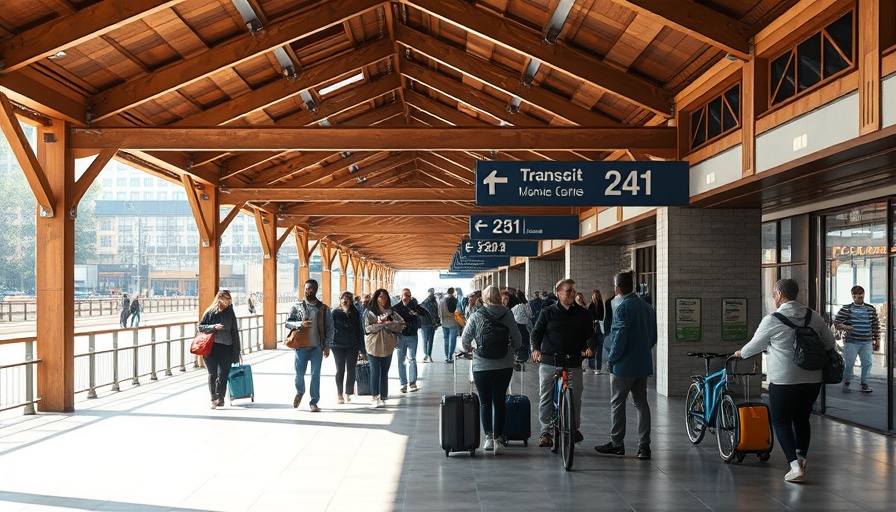
Oceanside Transit Center Development in Limbo Amid Community Concerns
The much-anticipated redevelopment of the Oceanside Transit Center, which is expected to bring 547 new apartments, a boutique hotel, and various commercial spaces, finds itself in administrative limbo following a recent City Council decision. During a meeting on October 7, a narrow 3-2 vote delayed the approval process, pushing the decision to November 19, amidst a growing list of unresolved community and logistical concerns.
Developer Toll Brothers has invested significant time—nearly 15 years—into the planning process. The proposed development will feature two five-story residential buildings, a four-story office structure, and retail shops, all designed to enhance the transit experience for those using the North County Transit District's (NCTD) services like the Coaster, Sprinter trains, and Amtrak. However, the continuous extensions of the negotiation agreement have raised alarms, with Toll Brothers hints that the project may not proceed if these debates prolong further.
Why the Delay?
Concerns regarding rerouted bus traffic and its intended transition to Missouri Avenue were among the most contentious issues discussed. Residents have voiced opposition, insisting that moving the bus transfer station from Seagaze Avenue compromises safety and reduces accessibility. The streets near Missouri Avenue are narrower and closer to homes, raising fears of increased pedestrian accidents and noise levels. City Council member Esther Sanchez emphasized the community's longstanding opposition to this plan and suggested that there could still be feasible alternatives that would appease both developers and residents.
Neighborhood Perspectives: A Divided Opinion
Community members appear to be split on the potential benefits versus the risks associated with redeveloping the transit center. While many residents acknowledge the need for additional housing and urban infrastructure, concerns abound over the proposed bus route realignment. Cleveland Street resident James Filanc represented voices within the Oceanside Safe Streets Association who feel that mixing residential, commercial, and transit uses at this location would pose substantial risks. Such feedback indicates that further enhancements in communication and project adjustments will be necessary to navigate the community's differing perspectives.
The Push for Affordable Housing
Another significant aspect of the debate centers around the affordable housing provisions outlined in the plan. The developer suggests that 15% of the new units will be considered affordable: 55 for low-income and 27 for moderate-income households. However, Councilmember Jimmy Figueroa challenged that formulation, stating that low-income tenants should be prioritized and cautioning that the proposed rents might still be out of reach for many residents. This touches on broader conversations about housing affordability in California, where economic pressures have made it increasingly difficult for residents to find suitable living spaces.
Future Implications for Urban Development
The reductions in public transportation accessibility and the complexities surrounding affordable housing elements could extend beyond this isolated project. The Council's hesitations come amidst wider legislative movements aimed at increasing residential development within proximity to transit routes, such as Senate Bill 79, which seeks to encourage denser housing near public transport options. Observers worry that if the current Oceanside project fails to progress, future developments may be stymied as well, impacting urban growth for years to come.
Conclusion: The Path Ahead for Oceanside
The layered complexities of the Oceanside Transit Center redevelopment reflect not just a singular project but a multitude of interconnected community needs and urban planning ideals. Residents, developers, and city officials alike stand at a crossroads, one that requires thoughtful negotiation and a willingness to adapt. With the next council meeting set for November 19, all eyes will be on whether solutions can be crafted that balance significant urban development with the concerns of the surrounding community.
 Add Row
Add Row  Add
Add 




Write A Comment